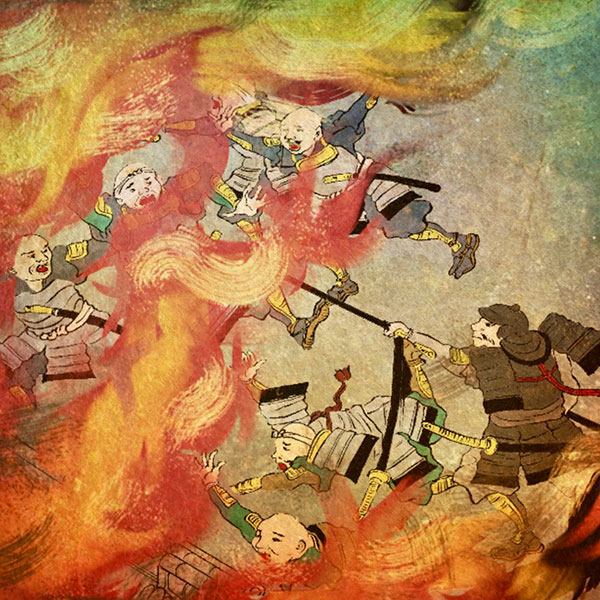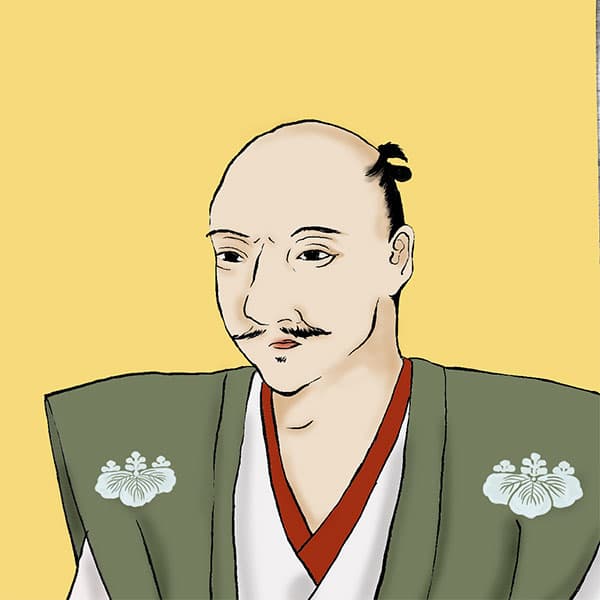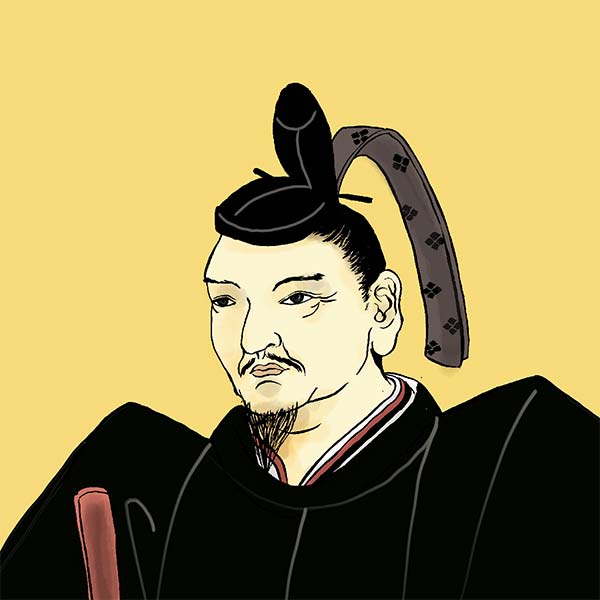Burning of Mt. Hiei (1/2)Nobunaga's "massacre" at Enryakuji Temple

Burning of Mt. Hiei
- Article category
- case file
- Incident name
- Burning of Mt. Hiei (1571)
- place
- Shiga Prefecture
- Related castles

Nijo Castle
- people involved
In August 1571, Oda Nobunaga attacked Mt. Hiei Enryakuji Temple (now Otsu City, Shiga Prefecture) and burned it to the ground. According to historical documents from the time, this ``burning of Mt. Hiei'' is said to have caused thousands of deaths, and is known as one of Nobunaga's ``evil and outrageous'' acts, in which monks, men, women, and children were all slaughtered. I am. However, later excavations revealed that there was a strong theory that there were actually not that many dead. This time, we will take a closer look at the burning of Mt. Hiei.
What is Mt. Hiei Enryakuji Temple?
Before we get into the story of the burning, let's check what kind of temple Mt. Hiei Enryakuji is. Hieizan Enryakuji, which is also registered as a World Cultural Heritage Site, is the head temple of the Tendai sect of Buddhism. It is said that Saicho, the founder of the Tendai sect of Buddhism, built Ichijyojikan-in (predecessor of the current Konpon Chudo) on the same site in 788. After Saicho's death, the temple was given a temple plaque with the title ``Enryakuji,'' and it came to be called Hieizan Enryakuji as it is today. Enryaku-ji Temple on Mt. Hiei continued to expand under the leadership of Ennin (Jikaku Daishi), the third generation priest, and Enchin (Chisho Daishi), the fifth generation priest. Hiei Enryakuji Temple is also known as the place where famous monks such as Shinran, the founder of the Jodo Shinshu sect, and Eisai, the founder of the Rinzai sect, trained, and is also called the ``mother mountain of Japanese Buddhism.''
Since the Heian period, Hiei Enryakuji Temple has had a history of repeated internal conflicts between the Ennin and Enchin factions, and the armed monks became increasingly armed. According to the Tale of the Heike, there is an anecdote that Cloistered Emperor Shirakawa, a powerful figure at the time who was ruling the cloistered government, said, ``The water of the Kamo River, the dice of Sugoroku, and the priest of the mountain are all things that cannot satisfy my heart.'' I am. The ``Yamaboshi'' mentioned here refers to the warrior monks of Enryakuji Temple on Mt. Hiei. It is said that Musashibo Benkei, who accompanied Yoshitsune, was originally a warrior monk who trained at Enryakuji Temple on Mt. Hiei, and the image of Enryakuji Temple on Mt. Hiei as monks and soldiers has been rooted since the Heian period.
Enryaku-ji Temple on Mt. Hiei expanded its power through military force and became something like an independent state, exerting a great influence on politics. When something happened that did not meet their wishes, these temples and shrines used ``forced accusations'' by sending armed believers, monks, and soldiers to the authorities to make demands. The power of Enryakuji Temple on Mt. Hiei and Kofukuji Temple in Nara was particularly strong, and they were feared as the ``Southern Capital of North Mine''. Its influence continued unabated into the Kamakura and Muromachi periods.
Enryakuji Temple on Mt. Hiei was burnt down even before Nobunaga!
In fact, Enryakuji Temple on Mt. Hiei was burnt down twice before Oda Nobunaga. Yoshinori Ashikaga, the sixth general of the Muromachi shogunate, was the first to take control of Enryaku-ji Temple on Mt. Hiei, which was an independent state. Before becoming Shogun, Yoshinori was the 153rd Tendai Zasu, the head of Enryaku-ji Temple on Mt. Hiei. For this reason, after becoming the shogun, he appointed his younger brother as Tendai zasu and tried to incorporate the power of Enryaku-ji Temple on Mt. Hiei. However, it did not go well due to opposition from various feudal lords. Frustrated, in 1435, Yoshinori resorted to military action by luring the powerful monks of Enryaku-ji Temple on Mt. Hiei and beheading them. The monks of Enryaku-ji Temple on Mt. Hiei opposed this and barricaded themselves in the Konpon Chudo Hall to protest. However, Yoshinori's policy remained unchanged, and in February, the monks set fire to Konpon Chudo and committed self-immolation. As a result, several halls, including the Nemoto Chudo, seem to have disappeared. After Yoshinori conquered Enryaku-ji Temple on Mt. Hiei, he rebuilt the main temple.
Enryaku-ji Temple on Mt. Hiei once came under the control of the Muromachi Shogunate, but after Yoshinori was defeated by Mitsuyu Akamatsu in the Kakichi Rebellion in 1441, it became armed and expanded its influence. It once again became like an independent country, with several thousand monks fighting against those in power. The person who set the Enryaku-ji Temple on Mt. Hiei on fire again was Masamoto Hosokawa, who served as the shogun's assistant and kanrei in charge of all political affairs. Masamoto was the person who staged a coup d'état during the ``Meio Coup'' in 1493, replacing the head of the shogun from Yoshiki Ashikaga with Yoshizumi Ashikaga. Enryaku-ji Temple on Mt. Hiei intervened in this battle between Yoshiki and Yoshizumi and defended Yoshiki.
Hieizan Enryakuji Temple, located northeast of Kyoto, could become an important military base that controls the highway connecting Kyoto and Omi. Moreover, there were many temples and monks' quarters, and it was a place where troops could be accumulated. When Masamoto learned that Enryaku-ji Temple on Mt. Hiei had been defeated, in July 1499, he attacked Enryaku-ji Temple on Mt. Hiei and carried out a large-scale burning attack. At this time, the main temple buildings on the mountain, including the Nemoto Chudo Hall, the Great Auditorium, and the Jogyodo Hall, were destroyed by fire. After that, Enryakuji Temple on Mt. Hiei was somehow restored, but it was once again caught up in the wars of the Sengoku period.
Conflict between Nobunaga and the Asai/Asakura clan that caused the burning
After Masamoto Hosokawa, Nobunaga Oda was the next to burn down Enryaku-ji Temple on Mt. Hiei. So why did Nobunaga end up attacking Mt. Hiei? This has a lot to do with the conflict between Nobunaga and the Asai/Asakura clan. Originally, Nobunaga and Azai Nagamasa were brothers-in-law, and they formed an alliance when Nagamasa married Nobunaga's sister Oichi. One of the conditions for this alliance is a "vow of non-war to the Asakura clan." This was because the Asai clan and the Asakura clan were in an alliance, but the Asakura clan turned against Nobunaga in response to Yoshiaki Ashikaga's call for a siege network for Nobunaga. Nobunaga broke his pact with Nagamasa and attacked the Asakura clan, but Nagamasa attacked Nobunaga from behind. This is the "Battle of Kanegasaki" that occurred in April of the first year of Genki (1570).
After that, the battle between Nobunaga and the Asai/Asakura clan intensified. In June of the same year, the combined forces of Nobunaga and Tokugawa Ieyasu defeated the Asakura and Azai forces at the Battle of Anegawa, but they were unable to deal a decisive blow. Meanwhile, the Miyoshi Sanninshu, who were enemies of Nobunaga, built Noda Castle and Fukushima Castle in Nakajima, Settsu Province (Osaka City, Osaka Prefecture), and raised an army in August. In September, the head priest of Ishiyama Hongan-ji Temple, Kennyo, sent out an insult to the followers of the Ikko sect and raised an anti-Nobunaga army.
Mr. Asai and Asakura saw Nobunaga's side being busy with such responses and saw an opportunity. He marched south along the west coast of Lake Biwa and headed for Kyoto with 30,000 soldiers. The Ikko-ikki group also joined this group, and the army expanded even further. In this way, Nobunaga and the Azai and Asakura armies fought for about three months (Shiga no Siege).
What is the "Shiga no Jin" that led Nobunaga to view Mt. Hiei as an enemy?
The Shiga no Jin began with the battle of Usayama Castle (Otsu City, Shiga Prefecture). On September 16, 1570, a battle broke out near Usayama Castle, which was defended by Yoshinari Mori, a senior vassal of Oda Nobunaga. Although Karinari and his men fought bravely with only 1,000 soldiers, the enemy was outnumbered and defeated due to the addition of monk soldiers from Enryakuji Temple on Mt. Hiei. Although Kasei was killed in battle, the castle survived without falling. After that, the Azai and Asakura forces set fire to Yamashina and Daigo as they approached the capital where the shogun was located.
Nobunaga was in the middle of a battle with Ishiyama Honganji when he learned of the movements of the Azai and Asakura forces on September 22nd, but he decided to retreat from Settsu to protect Kyoto from the Azai and Asakura forces. On September 23rd, the entire army was fully mobilized and returned to Kyoto on the same day. When the Asai and Asakura troops learned that Nobunaga had returned, they fled to Mt. Hiei.
In this way, Nobunaga and the Asai/Asakura forces faced off on Mt. Hiei. At this time, Nobunaga invited the monks of Enryaku-ji Temple on Mt. Hiei and persuaded them not to side with the Azai and Asakura forces. For Nobunaga's side, he appealed to Nobunaga to return the Enryaku-ji territory (manor) within Oda territory as it was, and to maintain neutrality if it was difficult to take sides, and even issued a letter of red seal. Furthermore, he threatened to ``burn down the whole mountain, including the Konpon Chudo Hall of Enryaku-ji Temple,'' if he joined the Azai/Asakura army, but there was no response from Enryaku-ji Temple on Mt. Hiei.
For this reason, Nobunaga ordered Mitsuhide Akechi and Nobumori Sakuma to surround Mt. Hiei and wage a siege. However, Nobunaga is surrounded by enemies such as the Miyoshi Sanninshu, the Ikko Ikkishu, and Rokkaku Yoshikata, who attack Nobunaga as if to take advantage of this opportunity. Nobunaga tries to end the encirclement as soon as possible, but it is difficult to reach a conclusion. On October 20th, he dispatched a messenger to the Asai and Asakura forces calling for a decisive battle, but the Asakura side did not respond and later offered peace. According to "Nobunaga Koki," Nobunaga at this time seemed to have thought, ``I want to vent my anger by fighting no matter what,'' and did not accept peace.
With the front at a stalemate, on November 30th, Nobunaga approached the Imperial Court and Yoshiaki Ashikaga, asked them to mediate, and began seeking peace with the Azai and Asakura clans. On the other hand, the Asai and Asakura clans also tend to lose contact with their home country, Echizen Province (including the Reihoku region of Fukui Prefecture) due to heavy snowfall. There is a possibility that you will not be able to return to your country due to snow. As a result, it appeared that peace would be reached, but the only person who opposed it was Enryaku-ji Temple on Mt. Hiei. In the end, Emperor Ogimachi issued a memorandum to ``relieve the territory of Mt. Hiei Enryaku-ji Temple,'' and Nobunaga submitted a pledge of his agreement, and Mt. Hiei Enryaku-ji Temple also accepted peace. Nobunaga must have been irritated by the way he was being treated from above.
Peace was concluded on December 13th, and the Shiga camp, which had lasted about three months, came to an end. The actions taken by Enryaku-ji Temple against Nobunaga during this battle became a factor in the burning of Mt. Hiei the following year.
Nobunaga's burning of Mt. Hiei ① All-out attack quickly reduced it to ashes
The peace between Oda Nobunaga and the Asai/Asakura clans did not last long. In February 1571, Nobunaga attacked Sawayama Castle (Hikone City, Shiga Prefecture), and the castle's lord, Kazumasa Isono, moved to the Oda side. Sawayama Castle was an important transportation hub, and Nobunaga sent his senior vassal, Hide Tamba, there.
The article about the burning of Mt. Hiei continues.
- people involved

- WriterNaoko Kurimoto(Writer)I am a former travel industry magazine reporter. I have loved history, both Japanese and world history, since I was a child. I usually enjoy visiting temples and shrines, especially shrines, and often do ``pilgrimages to sacred places'' themed around historical figures. My favorite military commander is Ishida Mitsunari, my favorite castle is Kumamoto Castle, and my favorite castle ruins is Hagi Castle. My heart flutters when I see the ruins of battle castles and the stone walls of castle ruins.





